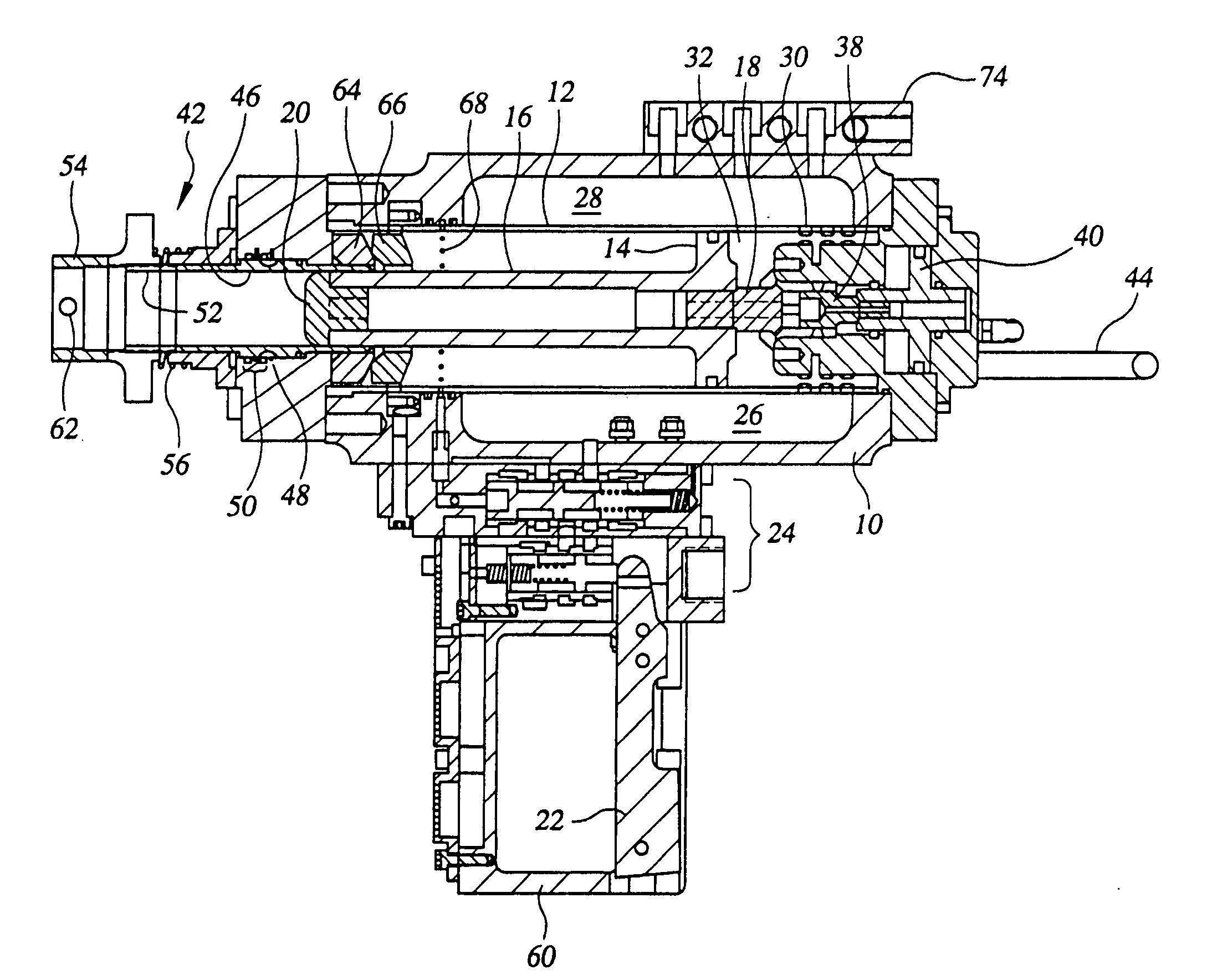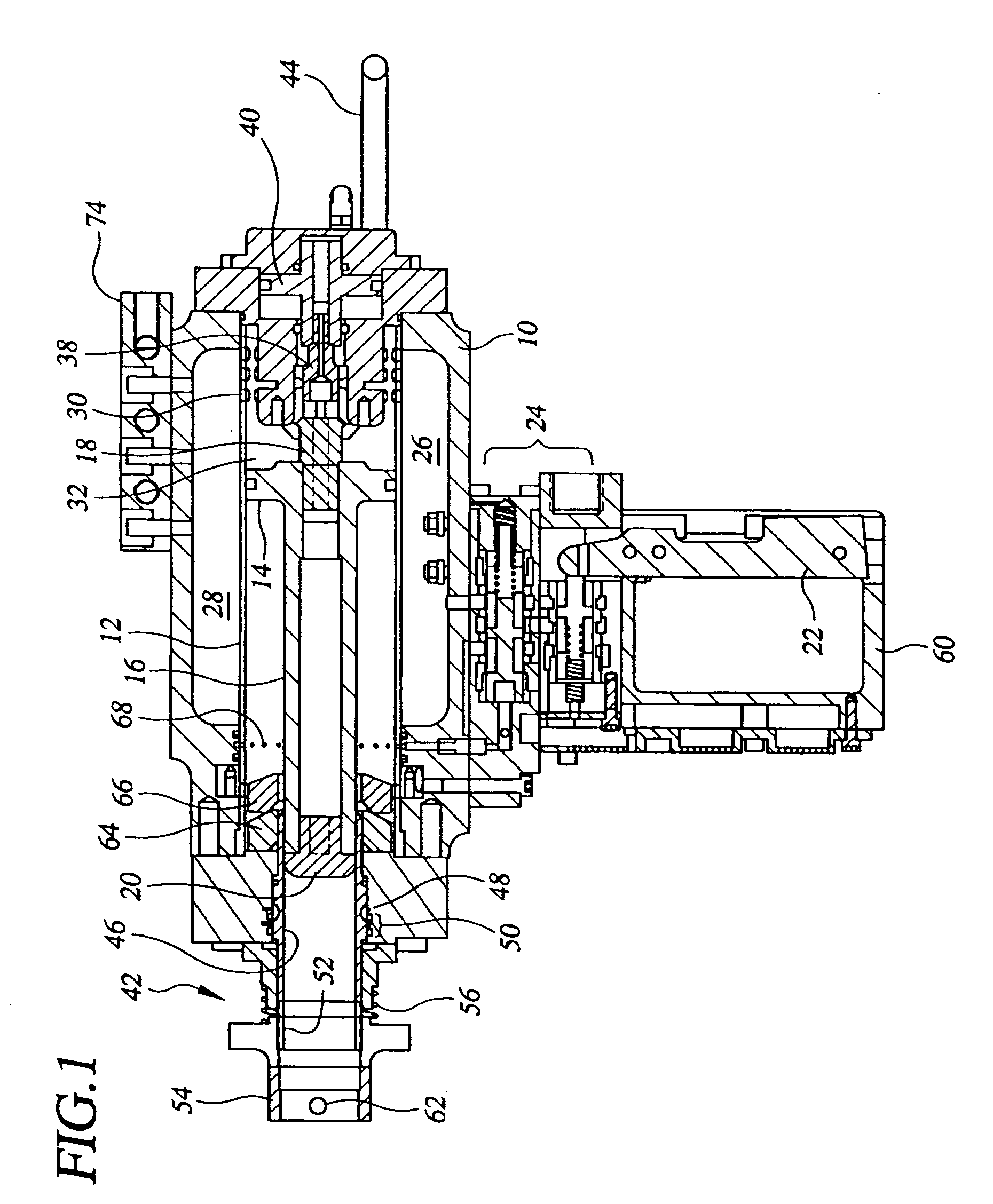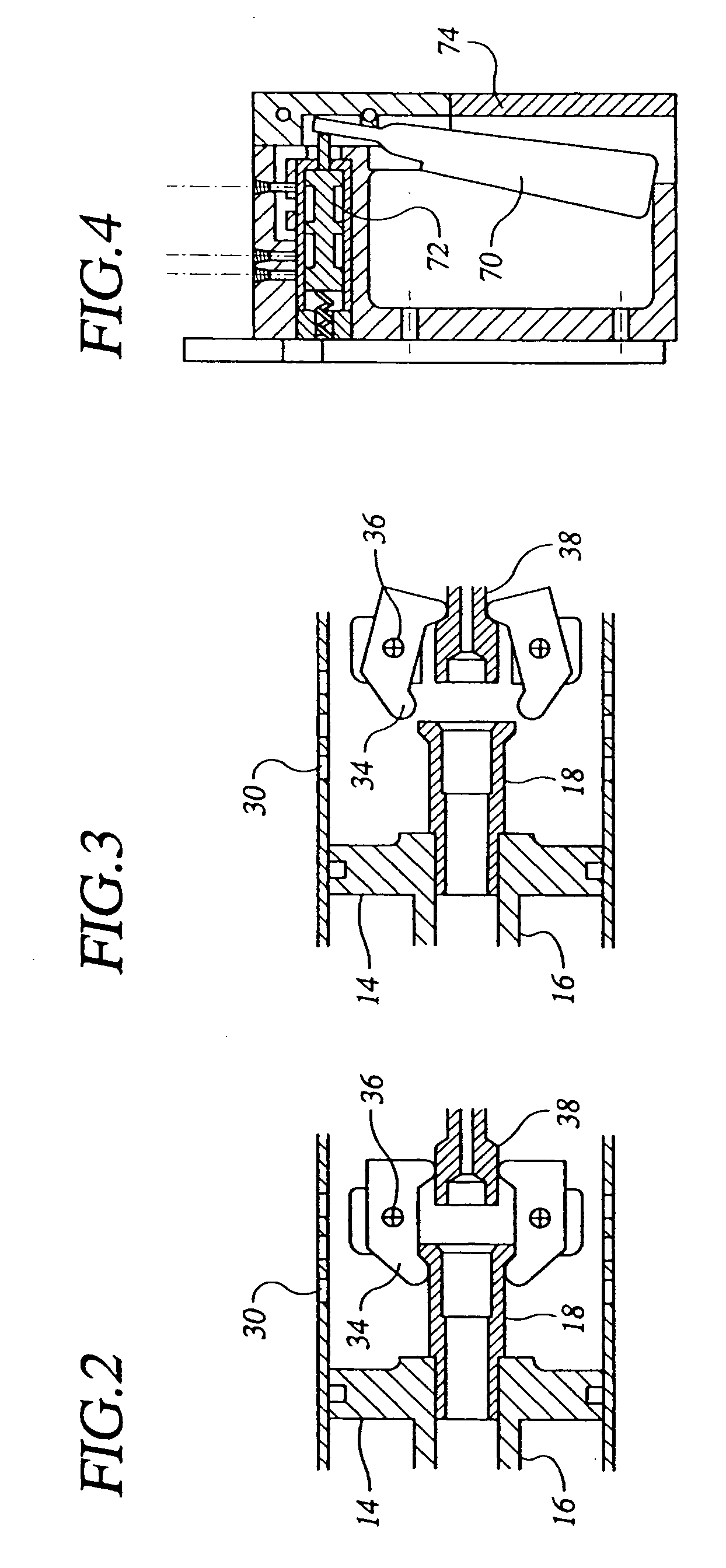Concussion stunner
- Summary
- Abstract
- Description
- Claims
- Application Information
AI Technical Summary
Benefits of technology
Problems solved by technology
Method used
Image
Examples
Embodiment Construction
(s)
[0031] In describing the preferred embodiment of the present invention, reference will be made herein to FIGS. 14 of the drawings in which like numerals refer to like features of the invention.
[0032] Referring to FIG. 1, the concussion stunner of the present invention includes a housing 10 having a cylinder 12 located inside and a piston 14 that slide within the cylinder. The piston 14 is preferably integrally formed as part of a stunning rod 16 having a catch end 18 and an impact head 20. The integrated piston 14 and stunning rod 16 are preferably constructed of a lightweight material, such as aluminum, to minimize weight.
[0033] The catch end 18 is preferably formed of a wear-resistant material, such as steel. An impact resistant material is used for the impact head 20. Tool steel, stainless steel and similar materials are suitable for the impact head 20 and the catch end 18. If desired, the catch end and the impact head can be removed. This allows these pieces to be replaced if...
PUM
 Login to View More
Login to View More Abstract
Description
Claims
Application Information
 Login to View More
Login to View More - R&D
- Intellectual Property
- Life Sciences
- Materials
- Tech Scout
- Unparalleled Data Quality
- Higher Quality Content
- 60% Fewer Hallucinations
Browse by: Latest US Patents, China's latest patents, Technical Efficacy Thesaurus, Application Domain, Technology Topic, Popular Technical Reports.
© 2025 PatSnap. All rights reserved.Legal|Privacy policy|Modern Slavery Act Transparency Statement|Sitemap|About US| Contact US: help@patsnap.com



